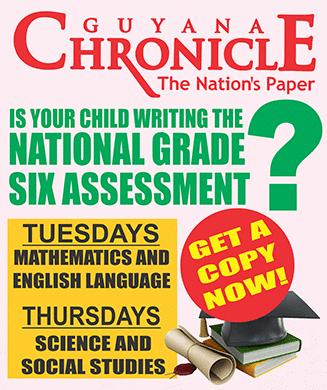THE Guyana Sugar Corporation (GuySuCo) is set to commence aerial spraying to test proposed buffer zones based on a proposal which was presented on Monday to Agriculture Minister Noel Holder and representatives of the Pesticides and Toxic Chemicals Control Board (PTCCB).The aim of the trial is to determine spray drifts during aerial spraying.
Given several studies and review of international guidelines and buffer zones, GuySuCo stated, a buffer zone of 500m is suitable to adequately limit any negative effects of aerial spraying by aircraft, the Agriculture Ministry (MoA) has said in a report.
According to the MoA, being the only corporation in Guyana with uninterrupted experience in agrichemical and fertiliser applications, GuySuCo has always established clear guidelines for the safe use and handling of agrichemicals, which include procedures for aerial application.
The corporation’s aerial operations have kept abreast with international standards in equipment and environmental guidelines for drift management.
GuySuCo’s chemical applications are mainly herbicides for weed management, and applying fertilisers and cane ripeners, whereas insecticides that are toxic chemicals are rarely used in the industry, and are not applied by the corporation’s aircraft.
Dr. Harold Davis, a consultant scientist attached to GuySuCo, has said the rationale for the proposed buffer zones was based on what obtains in other countries; a consideration of the capability of the equipment and the properties of the chemicals being applied; previous studies carried out by the corporation.
“Based on a previous study carried out in 2011, the evidence supports the proposed buffer zone. Wind speeds were taken into consideration,” Dr. Davis said.
However, the Deputy Registrar of the Pesticides and Toxic Chemicals Control Board (PTCCB) mentioned seven instances that occurred during the period 2009 to 2013, when personnel from GuySuCo, the National Agriculture Research and Extension Institute (NAREI), the Pesticides and Toxic Chemicals Control Board (PTCCB) and the Environmental Protection Agency (EPA) were part of investigating teams that confirmed cases of farmers being affected by the drift from aircraft spraying.
“In total, we would have had 24 reported cases for that period involving GuySuCo, but only seven of those cases were found to be as a result of aerial spraying of chemicals,” Mr. Amichand said. In response to those cases, Dr. Davis reassured that those cases would have occurred while aerial spraying was done outside of the regulated guidelines.
FAVOURABLE FACTORS
“If all the factors are favourable; meaning: if a pilot operates within the time, wind speed and other guidelines, drift should not occur. Spraying should only be effected between 6:00 hrs and 9:00 hrs. You cannot use human error to define a buffer zone. If persons are operating outside of the guidelines, then the instances for drift will occur,” Dr. Davis informed.
Minister Holder, in expressing concern for pilot error, has said that the PTCCB has to work within a given framework, to safeguard the health of persons. “For instance, if pilot error occurs in three out of every 10 applications, then it becomes an issue,” he said.
Responding to Minister Holder’s concerns, Dr. Davis indicated that all efforts were being employed to avoid pilot error; and in the event of an error occurring, the pilot would be held responsible.
Minister Holder has indicated that in developing proposals, policies have to be looked at in the light of what might be occurring in agriculture in the future. “As GuySuCo moves towards diversification, it wouldn’t be sugarcane alone under cultivation. Also, location-specific issues should be taken into consideration. In our proposals, we have to be general but at the same time we have to be specific in terms of both the location of estates and the chemicals being used,” he said.
Permanent Secretary in the Ministry of Agriculture, George Jervis, has indicated that realistic systems and guidelines need to be put in place to avoid error in every aspect of agriculture. “Every aspect of agriculture that the Ministry intends to enter into on a large scale in order to really develop the industry can only be profitable if we employ aerial spraying. Buffer zones must be standardized, so we need to be careful and factor in possible effects on people’s lives and livelihoods,” Mr. Jervis said.
It was explained that drifts can be reduced by applying adjuvants in the tank mixtures. Adjuvants are designed to reduce drift by increasing droplet size, by increasing viscosity of the spray solution, or by producing a larger particle or globule that contains the applied material. These chemicals can be classified as: (1) invert emulsions, (2) spray thickeners, (3) particulating agents, or (4) foaming agents.
Additionally, maintenance of equipment plays an integral role in drift spraying. It is important that all machinery and equipment used to carry out aerial spraying be maintained within recommended time periods. Faulty equipment can result in leaks and accidents, which can result in serious effects to persons and the environment.
Registrar of the Pesticides and Toxic Chemicals Control Board, Trecia David-Garnath, has committed to working along with GuySuCo and other related agencies to ensure that all guidelines are followed.



.jpg)









